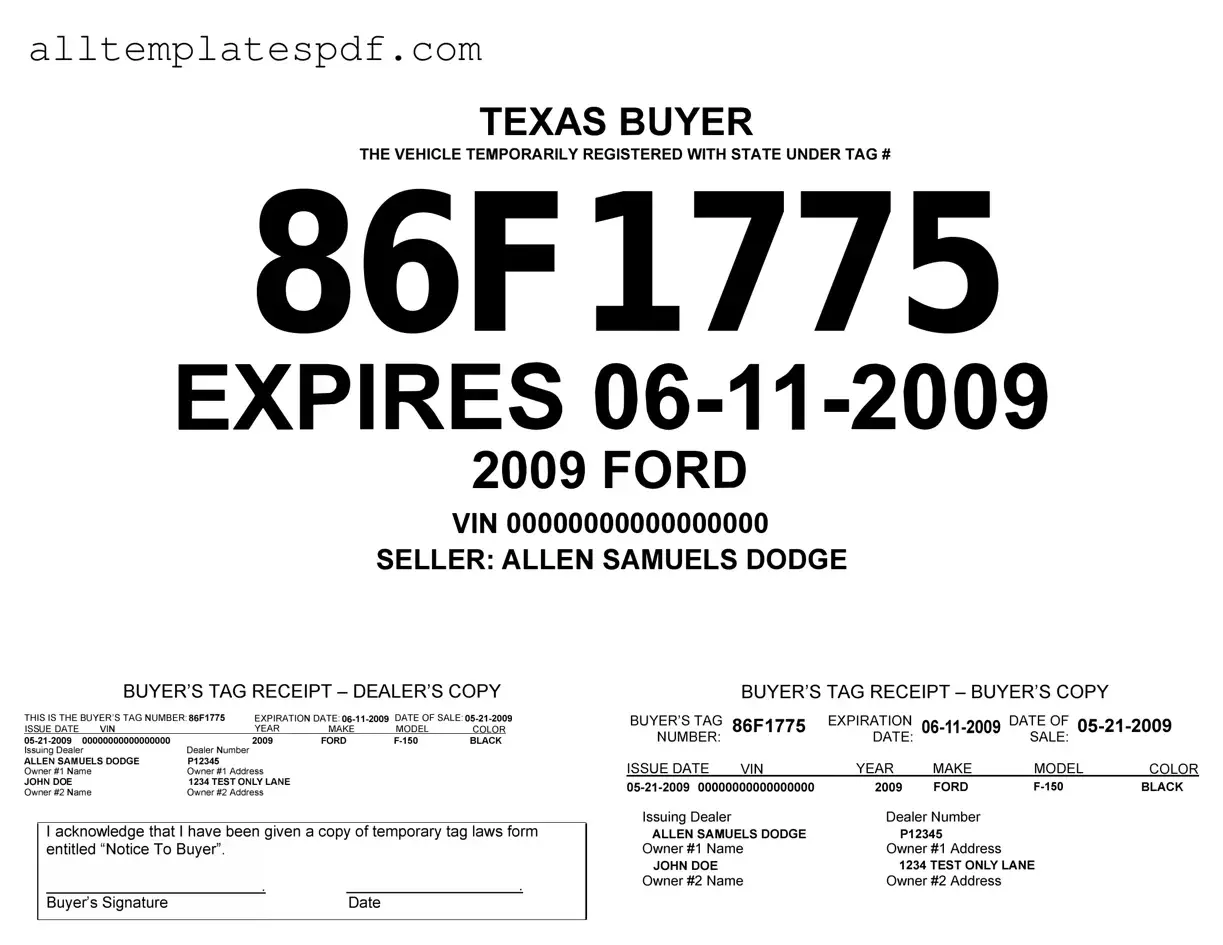When filling out the Texas Temporary Tag form, many people make common mistakes that can lead to delays or issues with their application. One frequent error is providing incorrect vehicle information. Ensure that the Vehicle Identification Number (VIN), make, model, and year are accurate. A small typo can cause significant problems.
Another mistake involves the owner’s information. Applicants sometimes enter the wrong name or address. This can lead to confusion and may prevent the temporary tag from being issued. Always double-check that the information matches what is on your identification and vehicle title.
Many people overlook the importance of signatures. Failing to sign the form or providing an illegible signature can result in the application being rejected. Make sure to sign clearly and in the designated area to avoid this issue.
Some applicants forget to include the required fees. The Texas Temporary Tag form requires payment, and missing this step can halt the process. Check the fee amount and ensure that payment is included with your submission.
Another common oversight is not providing proof of insurance. Texas law requires that vehicles have insurance coverage. Without proof, the temporary tag cannot be issued. Always include a copy of your insurance card or policy documentation.
People often misinterpret the duration of the temporary tag. The tag is valid for a limited time, and applicants sometimes request a longer duration than allowed. Familiarize yourself with the rules to ensure compliance.
Inaccurate dates can also be a problem. Filling in the wrong dates, whether it’s the date of application or the expected date of use, can lead to processing delays. Make sure to enter the correct dates clearly.
Some individuals neglect to keep copies of their submitted forms. This can be a mistake if there are any questions or issues later on. Always keep a copy for your records to reference if needed.
Lastly, not checking for completeness can lead to issues. Make sure all sections of the form are filled out. Leaving any part blank can result in delays or rejection of the application.
By avoiding these common mistakes, you can streamline the process of obtaining a Texas Temporary Tag and ensure that your application is processed smoothly.
